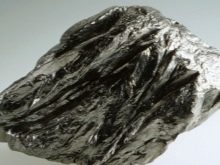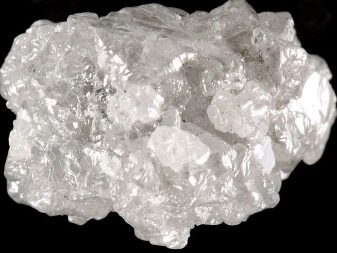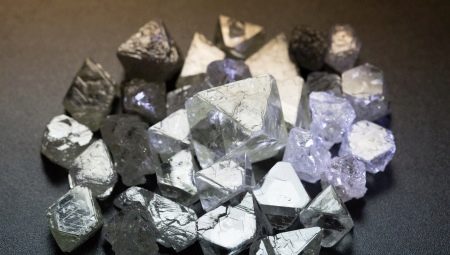Diamond has long been the standard of strength, indestructibility and stability. However, it is useful to know how diamonds are formed.


Features
Not so few people at least once in their life held diamonds in their hands. But as for the origin of the reference gem, the situation is much worse. Even experienced mineralogists and geologists cannot say with full certainty which version is true.

What did you think before?
Diamonds became known long before our era. It was impossible to pass a stone with such unusual properties.
For this reason, various assumptions began to be created that "explained" the appearance of the adamant.
One of the old legends says that:
- diamond crystals are living things;
- they can belong to different sexes;
- these organisms "absorb the heavenly dew";
- they can increase in size and even multiply.
Ancient Indian mythology claimed that diamond appears in nature when the five basic natural principles are combined. These include:
- air;
- water;
- land;
- sky;
- energy.
In ancient manuscripts, they immediately began to note that the diamond is very hard and has an extraordinary brilliance. It was often written that this mineral can appear “on a rock, in the sea, and on the hills located above the gold mines”.

Legends about Sinbad the sailor say that somewhere there is a rather deep gorge, at the bottom of which the primary deposits of diamonds are hidden. But, of course, all this is very weakly correlated with reality.
We must pay tribute to the people of antiquity and the Middle Ages. A search for the real reason for the formation of diamond shows that human thought never stood still. And yet, the first serious versions of his appearance could be put forward only after 1797 - it was then that the chemical composition of the mineral was precisely established.
A little later it was discovered that the difference between diamond, graphite and various types of coal is due to the arrangement of atoms inside the crystal lattices.



Versions
Earthlings
The essence of the concept is the occurrence of these minerals as a result of the movement of magma. It is assumed that most of them appeared no earlier than 2.5 billion and no later than 100 million years ago. It happened at a depth of about 200 km. There, graphite was affected simultaneously by a high temperature of about 1 thousand degrees and a pressure of 50 thousand atmospheres.
One version of the version implies that semiprecious stones formed already on the surface of the earth.
This occurred as a result of solidification of the lava in contact with air. The problem is that the temperature and pressure in this situation are not too high. For this reason, such a concept is not popular among professionals.


There is an alternative assumption that gems are formed from ultrabasic rocks.
Only later, when magma rose up, a stone was thrown out along with it. The vast majority of geologists are inclined to precisely this approach. An intermediate version is that diamonds form when magma has already begun to move upward, but has not yet reached the vent.
Proponents of this hypothesis argue that the rise should be the strengthening of crystal lattices.
Such structural changes significantly strengthen the stone itself and give it qualities that are so valuable on the commodity market.
Previous diamond reserves associated with ancient deposits and kimberlite pipes are becoming less common. And the need for stones is great. Sometimes, residents of volcanic areas some time after eruptions extract the hardest mineral from hardened lava. But the conditions required for its appearance are obtained not only due to volcanic processes, while some diamond researchers pay attention not only to the depths of the Earth, but also upwards.


"Guests from space"
Repeatedly, when examining pieces of meteorites, whole diamonds (or their individual particles) were found. The quality of such minerals was excellent.
Once, when a meteorite fell in the United States, precious stones were found in the walls of the crater. But they were slightly different from the usual options. The difference, according to some reports, relates to the structure of the crystal lattice - it does not affect the appearance.
Some experts believe that diamonds are already inside meteorites. When they are destroyed, the stones are "free".
The disadvantage of this version is that it is unlikely that a solid form of graphite will appear when the “cosmic cobblestones” themselves appear.

A more popular view is that a stone appears already upon impact with the earth's surface. This process provokes the release of significant mechanical and thermal energy.
For this reason, both temperature and pressure in the center increase sharply (where the crater remains). These factors lead to the characteristic transformation of carbon.
It is reliably known that in the Popigai asteroid crater, which appeared 35 million years ago, there are many diamonds. True, to see them somewhere on the counter of a jewelry store will not work - these are stones of very small size, suitable only for technical use.
Spectrographic observations showed that gaseous carbon (in pure form or in conjunction with nitrogen, hydrogen) is present in the atmosphere of the sun. Astronomers and cosmologists believe that this element was also in colossal clots of gas, dust, which became the forerunners of all the planets. Upon cooling, the gases liquefied. Gradually, liquid substances were distributed by mass: heavier ones plunged down, and light ones floated up.

Liquid magmatic masses in the initial period of the Earth's development easily broke through a thin layer of the earth's crust. Carbon actively reacted with hydrogen. As a result, the crust gradually lost this chemical element.
At the present stage of the geological history of our planet, it accounts for about 1%. Such an excursion allows us to make an outwardly paradoxical conclusion: there are no deep contradictions between volcanic and cosmic hypotheses.
The solid carbon form that is now being added to jewelry is used in drill bits, and it was once present in interstellar space.
The difference is only in the ways in which she got to a particular place. Experts believe that most of the carbon is now in the outer part of the mantle, because there high temperature and pressure lead to the formation of compounds of the basic substance with heavy metals. But some carbon atoms are attached to each other.

Even the famous Vernadsky and Fersman put forward the assumption that this is how diamonds are born. Two scientists own a scheme of geochemical transformations of carbon. According to this classical scheme, both diamond and graphite are concentrated mainly in the lower layers of the lithosphere.
Whether this is so is not known for certain, because the most convincing theories, even confirmed by laboratory experiments, do not yet have decisive confirmation.
The deepest wells on Earth get only to a depth of 10-12 km. In this case, the nucleation of diamonds, even according to Fersman, occurs at depths of not less than 30-40 km. This is exactly the average thickness of the earth's crust. Checking the mantle version at the current level of drilling is all the more impossible. Returning to the mantle-magmatic version, it is worth pointing out that according to it, carbon can turn into diamonds if:
- for hundreds of millions of years a chemically uniform medium will exist;
- this will support weak thermal gradients;
- the pressure will consistently exceed 5 thousand Pa.
The relevant parameters, based on the ideas of modern geology, are achieved at a depth of 100 to 200 km.
Another indispensable condition for "success" is the presence of diatreme or breakthroughs of the earth's crust. On continental platforms, a magmatic melt saturated with appreciable quantities of gases can penetrate it. As a result, well-known kimberlite pipes are formed.


There is an alternative fluid version, according to which the strongest mineral crystallizes at a shallower depth. The starting point is the decomposition of methane or its incomplete oxidation. The oxidizing agent is a mixture of hydrogen, carbon, oxygen and sulfur. The four elements can reside in both a liquid and a gaseous state of aggregation.
It follows from the fluid hypothesis that diamonds can appear at a temperature of 1 thousand degrees, acting simultaneously with a pressure of 100 to 500 pascals.
It is worth noting that only about 1% of the kimberlite pipes found in different parts of the world contain industrially significant deposits of diamonds.
In other places, large-scale mining is impractical. Over time, geological processes lead to the destruction of the upper part of primary deposits. Diamonds from there are carried away (and carried away in the past) by flowing water. With repeated deposition of the mineral, placers appear.

See the next video for the secret of the origin of diamonds.










